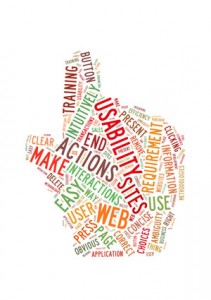Most of us are very well connected these days.
I’m not talking about knowing the right people, but about technology—smartphones, tablets, and laptops give us a lot of mobility and potential to do research and shop from just about anywhere. That is why it is important for businesses to show a unified front when it comes to customer experience. Your site should look the same and have the same functionality no matter what device you’re using.
The path to purchase isn’t straight and narrow, it’s now a winding path— or maybe stepping stones are a better analogy, as we hop between devices—however, companies can use their own data to develop a customer journey map that leads customers back to purchase.
There are other things that you can do in order to help visitors to buy your products:
- Making sure your site loads quickly on all devices is a big one. The attention span of today’s shopper is apparently shorter than that of a goldfish, which is 9 seconds. That’s not because consumers are stupid; quite the opposite—they know what they want and they know that they can find it faster somewhere else if your site isn’t loading quickly enough.
- You can also make shopping more personalized using real-time data and marketing techniques. This allows for systematically responding to your customers while they are on your site depending on their behaviour, and can increase conversion rates by up to 26%.
The customer journey is not always a short and sweet process but using techniques like these you can help increase sales and conversions on your site.
I came across this infographic, which I thought you’d enjoy, from Signal.co. Read their post, too; it’s very interesting. I know I switch between devices all the time, depending on where I am; and I double-screen too…
And, of course, this doesn’t apply only to B2C customer journeys.

Lucy is Editor at Corporate Eye


